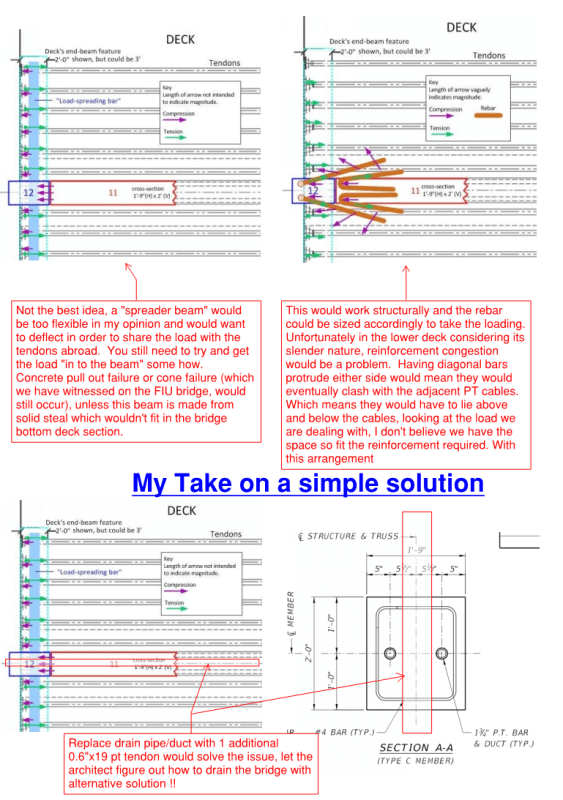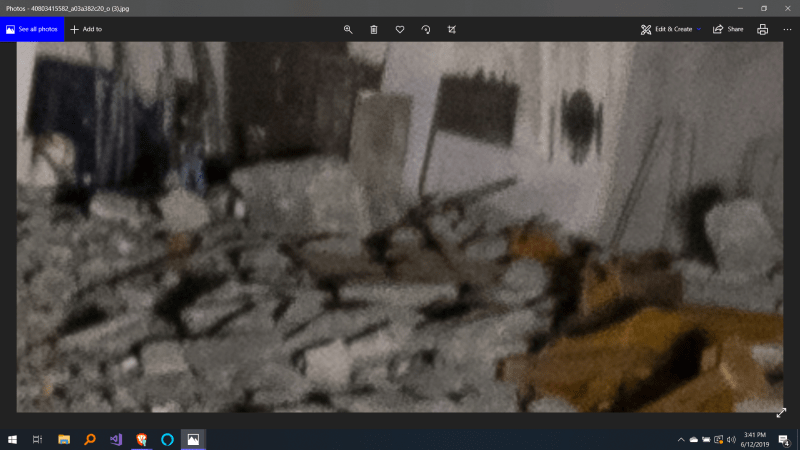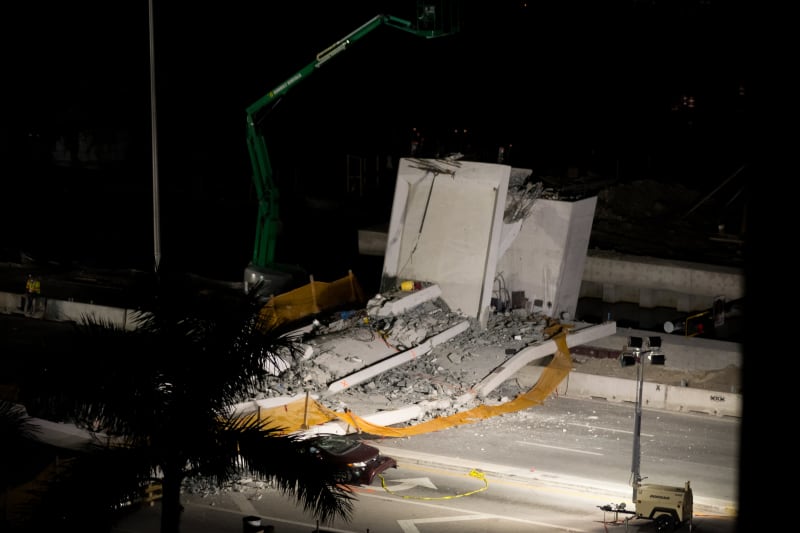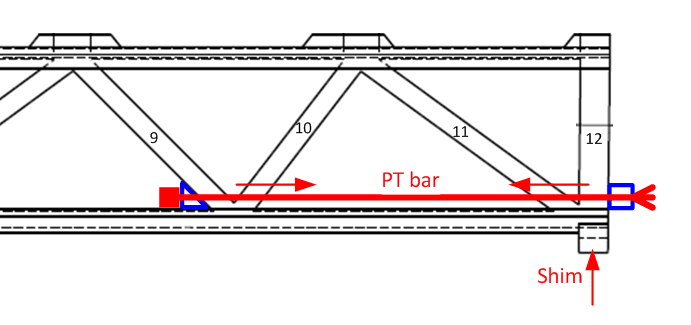Sym P. le said:
"it is not a small issue that the FIU bridge was a real time, real life experiment" - -
Very well stated. I am not sure you will consider it a compliment, but if an attorney finds your post, it will likely be used in court.
At this point in the engineering and construction technology the workings of a truss should be well enough understood to be considered common practice. The melding of that technology with brittle concrete, on a scale such as this project, then using prestressing (as I tried to describe) and the need to transport the heavy but (as it turned out) delicate structure makes this project particularly risky to all involved. Add to those real and daunting concerns the overlooking of details resulting in the deficient design of the most critical joint (which had no redundancy) and we have seen the results.
Should it have been tested full scale? You bet. When the falsework is removed from CIP work the self weight loads are present and immediately load the structure. If the transporters had remained at the end of this bridge, with PT not required in member 11, it would have likely have failed in lifting onto the transporter, or at least on the trip to its final location.
This structure was a bad idea at the outset, and received horribly deficient execution in the design, review, and construction phases. It is a poor representation of the current state of our knowledge and abilities.
Perhaps it will provide guidelines tor the ABC process. Clear guidelines or requirements for ductility, redundancy, and peer reviews with great attention given to the effects of moving a structure which is intended to serve without moving.




